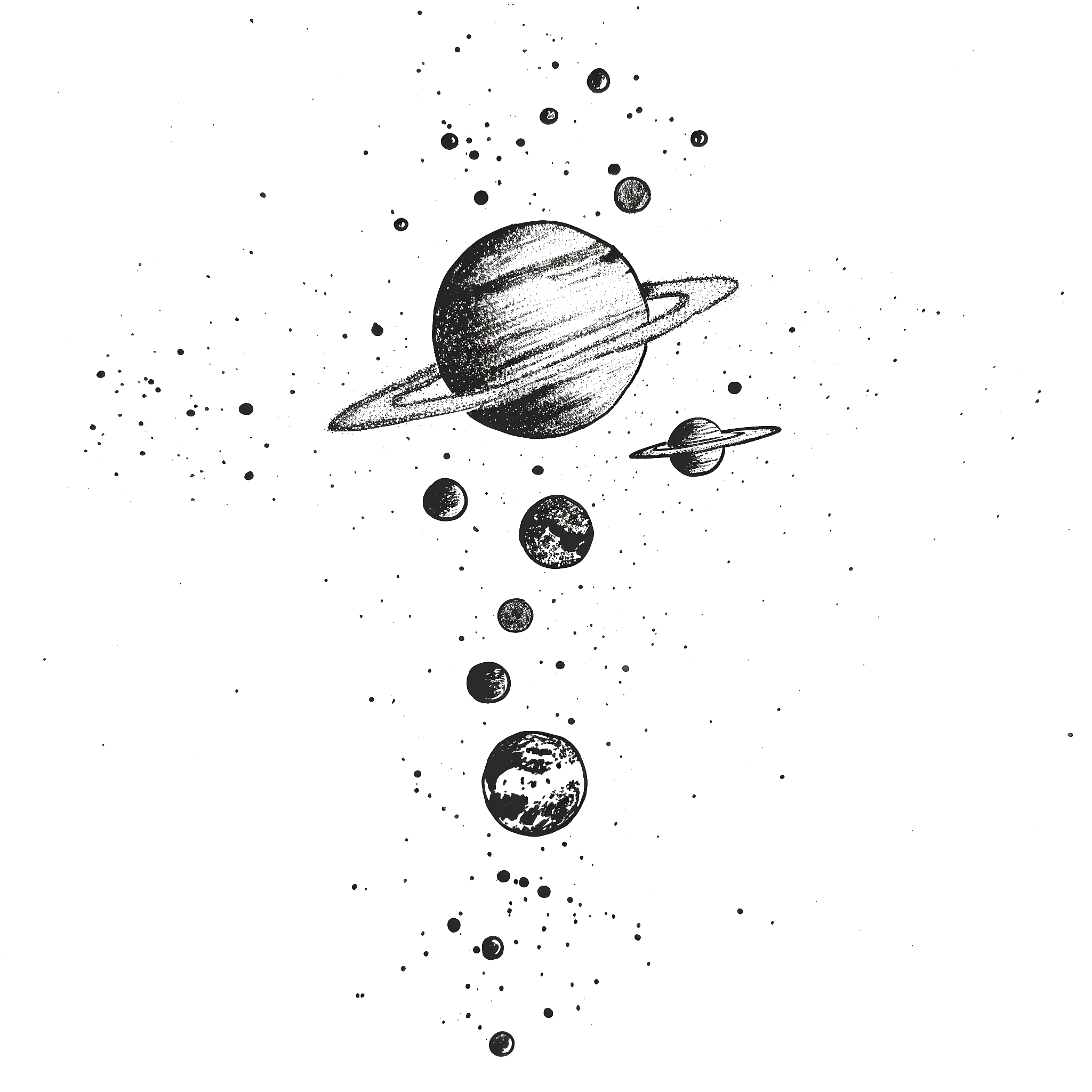Menu



Menu




In the beginning, there was curiosity. The universe, with its unfathomable expanse and enigmatic secrets, beckoned to the inquisitive mind. It whispered of mysteries waiting to be uncovered, of truths hidden beyond the stars. Once, humanity viewed Earth with a similarly limited perspective, thinking it flat, fearing the abyss that lay beyond its edges. But then, a brave soul challenged this notion, embarking on a voyage that revealed new worlds and proved our home was not a plate, but a sphere. This revelation was profound, yet it was but a stepping stone in our understanding.
Ego once placed us at the center of everything, believing that the sun, moon, and stars revolved around us. The stars were thought to be the spirits of our ancestors. Today, we look back and smile at our naïveté. But have we truly shed all our misconceptions? Isn’t it equally naïve to believe the universe had a beginning and will have an end? That it is finite, expanding into a void? That one day, all celestial lights will dim, and the universe will perish? This notion is akin to standing on a beach in France, peering through a telescope toward America and claiming the continent doesn’t exist because we can’t see it. Or gazing skyward, unable to spot the International Space Station, and declaring it a myth.
Like a car’s headlamp fading into darkness with distance, light from faraway stars and galaxies becomes too faint to detect, but it doesn’t cease to exist. Imagine light from a distant source. As you move away, the light dims and eventually vanishes from sight, not because it ceases to exist, but because its photons are too dispersed to detect. The further you travel, the less visible it becomes. The same principle applies to stars and galaxies in our infinite universe. Light from extremely distant celestial bodies may not reach us due to dispersion, but these bodies continue to exist beyond our observational limits.
Contrary to the popular theory of an expanding universe, consider the idea of an infinite universe — one without beginning or end. The universe may be boundless and eternal, with apparent expansion being a misinterpretation of our data. The observable universe might give the illusion of expansion due to our limited perspective. Perhaps the stars and galaxies we observe are just within a distance that allows their light to reach us. What if, upon reaching the so-called “border” of our universe, we find no edge but an endless expanse of new stars and galaxies appearing as we approach? The universe, I believe, is limitless, and the only boundaries are those of our imagination.

"Nothing is created; nothing is destroyed; Everything is transformed!"
Antoine De Lavoisier
Physics teaches us that energy is neither created nor destroyed; it only transforms. Chemistry tells us the same of matter. These fundamental principles challenge the Big Bang theory. If matter and energy cannot be created, how could they originate from nothing? The Big Bang suggests the universe began as an infinitely dense point that expanded. Yet, this conflicts with the laws of conservation. If matter and energy have always existed, it supports the notion of an eternal, infinite universe where transformation is continuous and unending.
The concept of an expanding universe implies a finite boundary, beyond which lies nothingness. But this raises questions: what lies beyond, and how can space expand into something? Instead, envisioning the universe as truly infinite removes the paradox. An infinite universe has no edges to expand into; it simply is, stretching beyond our observational limits due to the dispersion of light over immense distances.
This perspective invites us to reconsider the cosmos. If the universe is indeed infinite and eternal, the cycles of birth, life, and death of celestial bodies are ongoing processes without a definitive beginning or end. This view aligns with energy and matter conservation, suggesting a universe where transformation is the driving force.
By questioning the Big Bang and the expanding universe, we open possibilities for explanations that better fit physical and chemical principles. An infinite universe, without a singular origin or ultimate boundary, offers a coherent understanding of the cosmos, one in perpetual motion and transformation, echoing the eternal nature of existence.
"For you are Dust and to dust you shall return!"
Genesis 3:19
This poetic yet scientifically accurate statement captures our intrinsic connection to the cosmos. We are made of stardust. When a star is born, it initiates nuclear fusion, converting hydrogen into helium, releasing immense energy. This process continues, creating heavier elements up to iron. When the star can no longer sustain fusion, it may explode in a supernova or hypernova, scattering elements like gold and silver across the cosmos, forming the building blocks of new celestial bodies. The remnants of these cataclysmic events coalesce under gravity, forming new planets, moons, and stars. This cycle of creation and destruction illustrates the universe’s inherent cyclic nature.
Just as the universe is woven from the fundamental elements produced by stars, life on Earth is sustained by the basic elements of nature: earth, water, air, and fire. From the earth, we derive our food; from water, we drink; from air, we breathe; and from fire, we receive energy, particularly from the Sun. Without the Sun’s fiery energy, life on Earth would cease in an instant. Air sustains us for mere minutes, water for days, and food for weeks.
Life itself mirrors the cosmic processes. It begins with the planting of a seed, a cell that splits and multiplies, creating the complex tapestry of a living being. Just as stars undergo fusion, our cells divide, fueled by the nutrients and elements we consume from our environment. In the womb, we draw sustenance from our mother; after birth, we take from the planet. Everything we are is a transformation of the matter we ingest.
Upon death, this borrowed matter returns to nature. Our bodies, vehicles for our souls, decompose and recycle, whether through rapid combustion or gradual decay. The matter that once constituted our bodies is never destroyed, only transformed, continuing the eternal cycle of creation and dissolution, of life and death. Thus, our existence is a fleeting, borrowed dance of stardust and earthly elements, united in a grand cosmic rhythm.
So how would the universe prevent a “heat death”?

Imagine black holes, the enigmatic remnants of massive stars… They possess gravitational fields so intense that not even light can escape. As matter is drawn in, it is compressed to incredible densities, but what if it is also breaking it down into fundamental components? What if black holes act as cosmic recyclers? Erasing all the metadata from matter to give the possibility of a fresh start, ensuring matter is never lost, but transformed.
In this perspective, black holes could be seen as nature’s way of resetting the cosmic clock, much like the changing seasons on Earth. Nature shows us through the cycle of seasons how death and rebirth work. Spring brings birth and growth, summer represents adulthood and vitality, autumn signifies aging and decay, and winter symbolizes death and rest. But after each winter, there is always a spring, a renewal, and trees gain new layers on their bark, much like our souls.
Similarly, black holes might compress and break down matter, only for it to be re-emitted over time. As black holes evaporate, perhaps the matter they absorb is released as radiation or as new, undiscovered components. These components could escape the immense gravity that once held them, perpetuating the cycle of transformation. Just as in nature, where after each death there is a period of rest and then rebirth, black holes could ensure that the matter is never truly lost but instead transformed and given a new purpose in the universe. Maybe this also explains those inexplicable events in quantum mechanics where matter or particles appears randomly in the cosmos. This cosmic recycling could be the ultimate expression of nature’s cyclical patterns, ensuring that everything in the universe is in a constant state of flux and renewal.
An infinite universe is populated with endless celestial bodies—stars, planets, galaxies—stretching beyond our comprehension. But the human mind struggles to process infinity, often leading to misconceptions about the universe’s nature. Embracing an infinite cosmos aligns with the principles of transformation, where matter and energy are never created or destroyed but continuously recycled.
In an infinite universe, the cycle of birth, life, and death of celestial bodies continues endlessly. Stars are born, live out their lifespans, and die, contributing their elements to form new stars and planets. This cycle ensures the universe remains dynamic and ever-changing, even if its overall structure is infinite and unchanging. The concept of cycles extends to all aspects of the universe. Planets form from remnants of previous celestial bodies, life arises, and the cycle of creation and destruction perpetuates. This view underscores the interconnectedness of all things and the continuity of existence.
The narrative of the universe is one of continuous transformation. From the birth of stars in stellar nurseries to the explosive deaths of supernovae and the enigmatic nature of black holes, the cosmos is a dynamic, ever-changing entity. The principles of physics and chemistry, which dictate that energy and matter cannot be destroyed but only transformed, provide a framework for understanding the lifecycle of celestial bodies.
By viewing the universe as infinite, we embrace the idea that it has no beginning and no end, but is a boundless expanse where the cycle of creation and destruction continues endlessly. This perspective offers a profound connection to the cosmos, emphasizing that we are all part of a grand, ongoing journey through an infinite universe, where nothing is ever truly lost but always transformed into new forms of existence.

"I am the Alpha and the Omega, I am the First and the Last! ... I am!"
Much like an infinite universe!
In the end, could it be GOD? The Universe? Are we living inside him? Like we once lived inside our mother for a short period of time? But this is another story!
